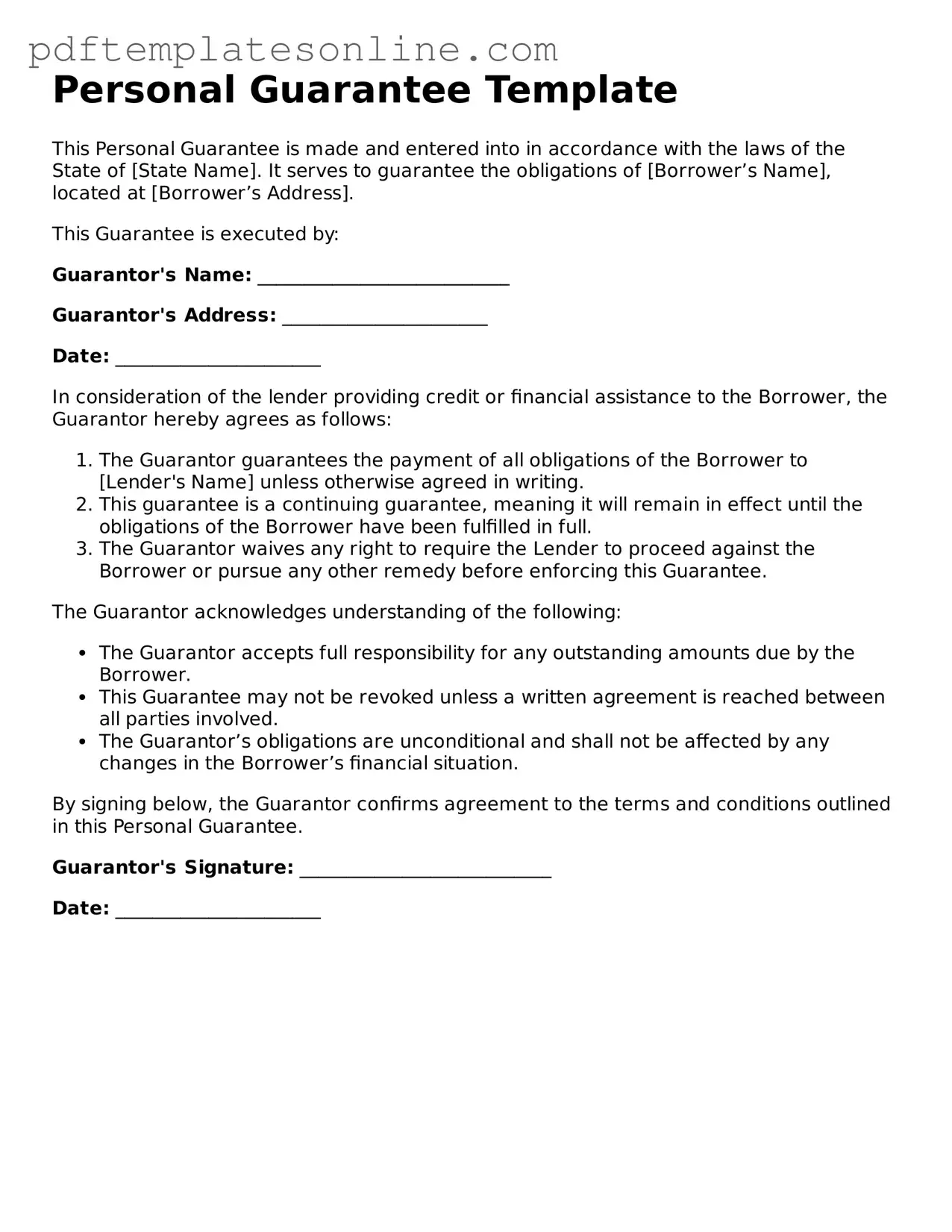Fillable Personal Guarantee Document
A Personal Guarantee form is a legal document where an individual agrees to be responsible for another person's debt or obligation. This form is commonly used in business transactions, especially when a lender requires additional assurance that a loan will be repaid. Understanding the implications of signing a Personal Guarantee is essential for anyone considering this commitment.
Access Personal Guarantee Editor Now
